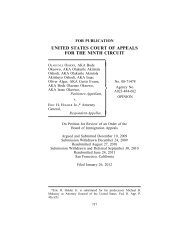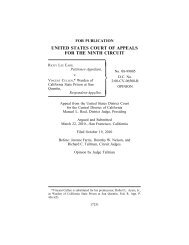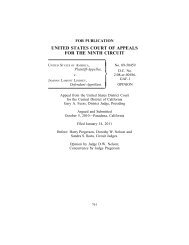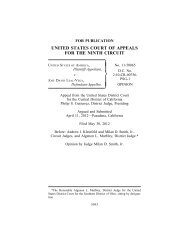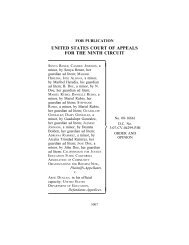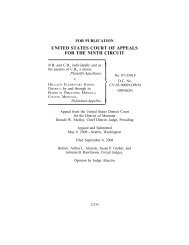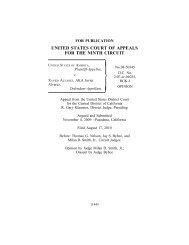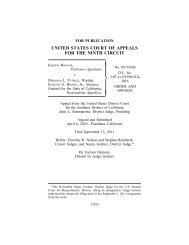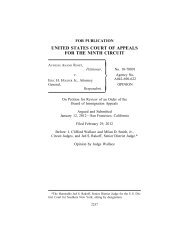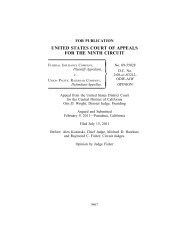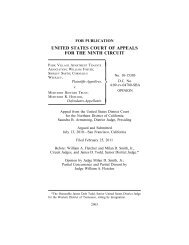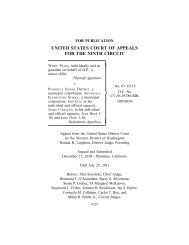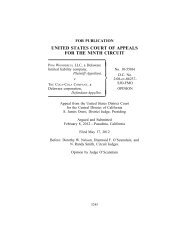william leiva-perez v. eric holder, jr. - Ninth Circuit Court of Appeals
william leiva-perez v. eric holder, jr. - Ninth Circuit Court of Appeals
william leiva-perez v. eric holder, jr. - Ninth Circuit Court of Appeals
You also want an ePaper? Increase the reach of your titles
YUMPU automatically turns print PDFs into web optimized ePapers that Google loves.
4324 LEIVA-PEREZ v. HOLDER<br />
stay requests. Id. at 514. We explained that to justify a stay<br />
under that standard:<br />
Petitioner must show either a probability <strong>of</strong> success<br />
on the merits and the possibility <strong>of</strong> irreparable<br />
injury, or that serious legal questions are raised and<br />
the balance <strong>of</strong> hardships tips sharply in petitioner’s<br />
favor. These standards represent the outer extremes<br />
<strong>of</strong> a continuum, with the relative hardships to the<br />
parties providing the critical element in determining<br />
at what point on the continuum a stay pending<br />
review is justified.<br />
Id. (citations omitted). This “continuum” was essentially the<br />
same as the “sliding scale” approach we long applied to<br />
requests for preliminary injunctions, whereby “the elements<br />
<strong>of</strong> the preliminary injunction test are balanced, so that a<br />
stronger showing <strong>of</strong> one element may <strong>of</strong>fset a weaker showing<br />
<strong>of</strong> another.” Alliance for the Wild Rockies v. Cottrell, 632<br />
F.3d 1127, 1131 (9th Cir. 2011).<br />
[2] The Abbassi formulation remained our standard for<br />
stays <strong>of</strong> removal until an aspect <strong>of</strong> it—its treatment <strong>of</strong> the<br />
irreparable harm factor—was rejected as too lenient in Nken.<br />
Nken’s principal holding was that stays <strong>of</strong> removal are governed<br />
by “the traditional test for stays,” rather than 8 U.S.C.<br />
§ 1252(f)’s higher standard for enjoining an alien’s removal,<br />
but it also endeavored to clarify “what that [traditional stay]<br />
test is.” 129 S. Ct. at 1760. 1<br />
Nken began by noting the four factors that have been considered<br />
when evaluating whether to issue a stay:<br />
1 Subsection 1252(f)(2) <strong>of</strong> Title 8 provides in full: “Notwithstanding any<br />
other provision <strong>of</strong> law, no court shall enjoin the removal <strong>of</strong> any alien pursuant<br />
to a final order under this section unless the alien shows by clear and<br />
convincing evidence that the entry or execution <strong>of</strong> such order is prohibited<br />
as a matter <strong>of</strong> law.”



